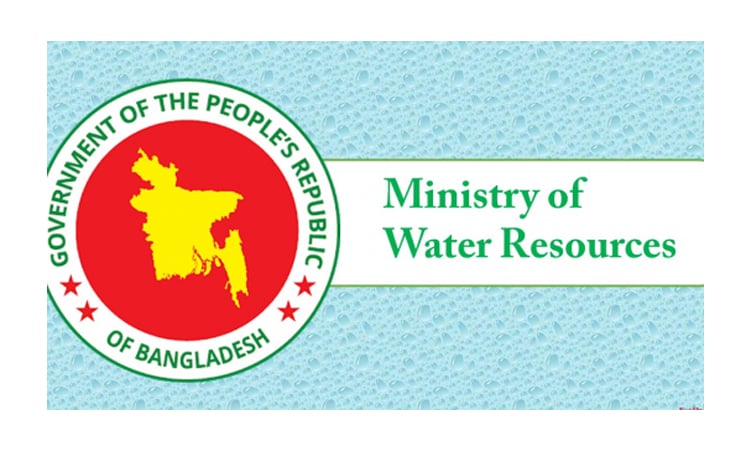News Flash
News Flash

DHAKA, Aug 10, 2025 (BSS) - In the wake of the electrifying student-led uprising that swept across Bangladesh in July and August 2024, a new chapter in the nation’s history began. On August 8, an interim government emerged, led by Professor Muhammad Yunus.
With the winds of change blowing strong, the Ministry of Water Resources, under the leadership of Syeda Rizwana Hasan, embarked on a transformative journey, making remarkable strides across critical sectors in just one year.
In an interview with BSS, Rizwana Hasan detailed the ministry’s achievements during the fiscal year 2024–2025. These include the construction of 11.80 kilometers of new embankments, reconstruction of 105.35 kilometers of embankments, re-excavation of 250 kilometers of drainage canals, construction of 22 water control structures and repair or reconstruction of 33 water control structures.
Additionally, 123 kilometers of riverbanks were protected, 136 kilometers of irrigation canals were re-excavated, and 114 irrigation structures were built or renovated.
Besides, coastal embankment upgrades included 33.55 kilometers of repairs and elevation, while 660 kilometers of embankments were restored.
Among the ongoing development projects, mid-term evaluations have been conducted for five through physical or mathematical models.
Survey activities were carried out using two physical or mathematical models. Clearance has been provided by the Water Resources Planning Organization (WARPO) for 100 percent of the project proposals received from various agencies.
Over the past year, the ministry’s mentionable success:
Over the past year, the ministry has launched initiatives to eliminate pollution and encroachment from rivers across all eight divisions.
A major flood control and riverbank protection project is underway in Feni district. Emergency repairs are ongoing in a 20-kilometer stretch of the erosion-prone Teesta River.
The ministry has also officially published the total number of rivers in Bangladesh.
In Jashore’s Bhobadah area, excavation of the Amdanga Canal has begun to address waterlogging. In coordination with the Ministry of Local Government and city corporations, 19 canals in Dhaka are being excavated and cleaned. Action plans are being finalized with international donor agencies to restore four rivers surrounding Dhaka.
Public hearings are being held in each division to guide development projects.
Efforts are underway to upgrade both the Bangladesh Water Development Board (BWDB) and Water Resources Planning Organization (WARPO) into full-fledged directorates.
Under BWDB’s 99 active projects, including embankment construction, riverbank protection, canal excavation, and irrigation infrastructure have helped mitigate flooding, waterlogging and erosion, while supporting agricultural irrigation.
Officials said that over the past year, significant activities have included the undertaking of necessary measures for pollution control, eviction and revitalization of eight rivers across seven divisions (excluding Dhaka Division).
Actions have been taken to reduce pollution, restore ecosystems, and establish a blue network around the rivers encircling Dhaka, including protection, conservation, water quality improvement, and beautification of the Goran Chot Bari and Turag River.
The reconstruction of the Musapur Regulator is ongoing, along with flood and drainage management in Feni district.
Initiatives have been taken to prepare a comprehensive list of canals across the country, expand irrigation through the use of surface water in drought-prone northern and north-western regions and implement river pollution reduction programmes in key cities.
A river restoration project for the Buriganga River has also been undertaken. In addition, necessary activities have been carried out for pollution control, eviction, and revitalization of eight rivers across seven divisions outside Dhaka.
According to the Ministry of Water Resources, a feasibility study has been undertaken to develop drainage improvement systems in the Bhobodaha area of Jashore district and formulate a sediment management plan for the river basins of the Shibsa and Pashur rivers in the south-western region of Bangladesh (for the period 2025–2026).
Under the World Bank’s purview, an annual maintenance agreement has been signed with the supplier agency to keep the previously installed hydro-meteorological gauges operational.
The previous flood forecasting and warning website (www.ffwc.gov.bd) has been upgraded to modernize the dissemination of flood forecasting messages. New features have been added to the new website, including GIS-based maps, color-based flood alert maps and flow path visualizations.
With technical support from the regional organization REMES, a rainfall threshold-based flash flood forecasting system has been developed for rivers at high risk of flash flooding in the country.
This model is a new addition to the flash flood forecasting system and has become operational this year.
In a joint initiative, the Bangladesh Telecommunication Regulatory Commission (BTRC), the Department of Disaster Management (DDM), and the Bangladesh Water Development Board (BWDB) are providing toll-free SMS services to deliver flood forecasts and warnings to people in flood-prone areas.
With financial and technical support from the International Centre for Integrated Mountain Development (ICIMOD), located in Nepal, a pilot programme has been launched to implement nature-based solutions and community-based flood early warning systems.
Several initiatives are also being implemented with ICIMOD’s technical support, including the Brahmaputra River Basin Network focusing on the Brahmaputra River.